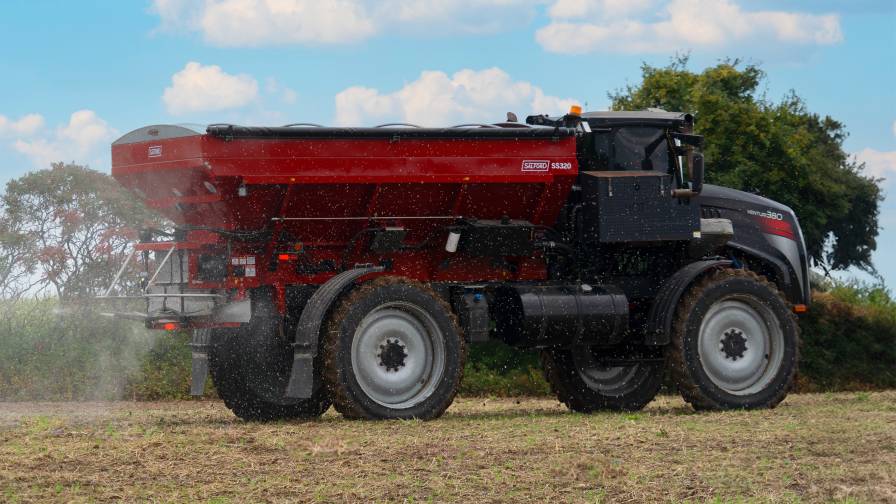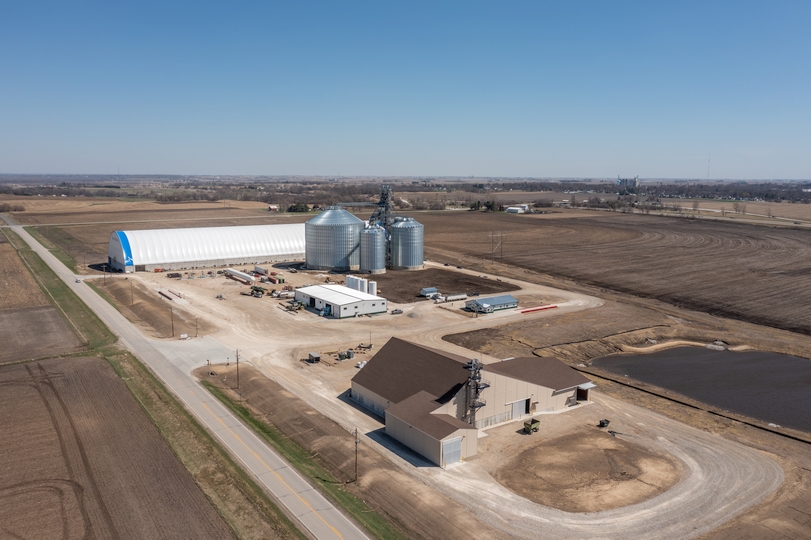Looking at the State of the World/Agriculture
With COVID-19 still an issue, the 2021 Mid America CropLife Association (MACA) once again held its annual meeting virtually. Naturally, numerous speakers on the agenda looked at the issues impacting the agricultural marketplace, many of which are a direct result of the pandemic.
Setting the stage for the entire meeting was Dr. Michael Swanson, Chief Agricultural Economist for Wells Fargo Bank NA. He began his talk by pointing out that he is often asked by individuals if what is happening in today’s world represents “the new normal.”
“There is no normal,” said Swanson. “There’s only what we have temporarily.”
In essence, he added, this debate over “the new normal” usually boils down to one factor — change. And this is what the agricultural market, and the entire world, has been dealing with the past few years as the effects of the COVID-19 pandemic have been felt across the globe. “What people are really worried about right now is change,” said Swanson. “What changes are permanent and setting up for the long term, such as technology adoption, and what’s transitory, such as the weather or money exchange rates.”
Swanson pointed out that the entire concept of change can encompass three different variables — trends, cycles, and random noise. “If you want to know what any market is going to do, you look for the first two of these and disregard the last one,” he said.
Looking more specifically at the agricultural marketplace, Swanson said that all signs point to 2021 being a “very good year” for everyone involved in the business. “For farmers, we are seeing record crop receipts coming out of the field,” he said. “Corn and soybean yields this year are going to support very good revenues at the farm level. This year, we will have 15 billion-plus bushels of corn to sell, so farmers are getting good returns.”
Furthermore, this should translate into good revenues for many agricultural companies. “The good news for crop input suppliers is we are seeing good food sales at home and away from home,” said Swanson. “And this money tends to flow throughout the entire agriculture system as a result.”
Given this performance by the agricultural market in 2021, Swanson said most farmers are feeling good about the prospects for 2022 as well. “Is the farmer feeling confident about the future?” he asked. “The answer is yes.”
However, he added, many farmers tend to live “by looking in their rearview mirror before looking forward.” For many, since 2021 was a good revenue year, they have already booked many of their major expenses for the 2022 growing season, such as cash rents, seeds, fertilizer, and crop protection products.” But others have not followed this same practice, and Swanson foresees potential “yellow flags ahead — in some cases, red flags.”
For one thing, he warned crop input prices for such things as seeds, automation, and crop protection products are expected to raise substantially in 2022. Then there’s fertilizer.
“Over the past 10 years, the prices for nitrogen, phosphorus, and potassium were equal to approximately 19% of corn yields,” said Swanson. “But looking at spot prices, it looks like these inputs will be equal to 24% to 25% of corn yields for 2022 — which are the kinds of percentages we saw back in 2013.”
Still, with farmers enjoying strong yields and pocketing good revenues, Swanson predicts crop input suppliers should see a “good sales year” during the 2022 growing season as a result. However, years beyond 2022 could present a few challenges to this continued growth mode.
“The average price of corn through June 2021 was $6.12 per bushel,” said Swanson. “But I do not think that corn prices will stay above $5 per bushel for a very long period as yields keep increasing. This means for farmers, there is likely to be more concern when they are planning for the 2023 and 2024 growing seasons. There will be a lot more stress in the agricultural community towards the end of 2022 as overall costs catch up the current farm revenue piece.”
The Panel Views
Back to the present, a panel of experts provided some insights into the ongoing supply issues plaguing much of the world. As one of them put it bluntly: “The COVID-19 pandemic turned our businesses upside down, and we are still trying to figure out how to deal with all of this. How can the industry address these, and when will things get back to what we knew in the past?”
Speaking first was Spencer Vance, North American President for Albaugh, LLC, admitting he was completely in the dark when it came to these kinds of questions.
“I don’t have the answers,” said Vance. “Things in our markets are so dynamic and fluid right now that they are changing hourly, daily, and weekly in many cases.”
Vance discussed at length the situation currently facing all suppliers and manufacturers when it comes to ocean freight. “Right now, there are massive shortages,” he said. “When COVID first hit, everything shut down, and it’s taking a long time to get shipping containers, ships, and port operations back up and running again. Naturally, this has caused a massive increase in the costs to get a shipping container anywhere in the world.”
In addition to increased costs, added Vance, just off-loading already sailed freighters has also been a huge issue. Just off the coast of the Long Beach port, there are numerous ships currently waiting to dock and be unloaded as short-handed crews try to keep pace. “Usually, there are between 20 and 40 ships waiting to unload at any time, which is normal,” said Vance. “In mid-September, there were more than 70 ships anchored off the coast, waiting to unload. And with 400 more ships getting ready to sail to the West Coast from Asian ports [before the end of the year], things likely won’t get any better for quite a while longer.”
So-called “black swan” events, tied to such things as severe storms and government mandates have further complicated the supply chain issues, he added. “In February 2021, a series of storms hit the Gulf Coast, causing serious problems with the Texas power grid,” said Vance. “Manufacturing and refining in these areas were offline for some time, which caused problems in getting such things as the petroleum, alcohols, and solvents used by agricultural producers. Then, Hurricane Ida hit just about one month ago, knocking out many more manufacturing facilities in the area, including Bayer’s main glyphosate production plant in Louisiana. We still aren’t certain when all these disruptions will be fixed.”
Finally, Vance pointed to the “stay/work from home” trend during 2020-21 as another factor gumming up the global supply chain. “Online deliveries have eaten up a lot of cardboard,” he said. “So, it has been more difficult to get cases and boxes for our packaging needs. It used to be that 10-days lead time was normal for us. Now, the lead time to receive cases and boxes is more like 10 weeks!”
Delivery Concerns
Dennis McCaffrey, Senior Vice President Strategic Sales Management for XPO Logistics, agreed with Vance’s points on ocean freight and at-home deliveries causing overall supply chain issues.
“Right now, approximately 11% of global shipping capacity is tied up in the world’s oceans,” said McCaffrey. “Furthermore, manufacturing in China right now is at 50% of the level it was at during pre-COVID-19.”
He added that XPO Logistics used to do most of its shipping with businesses, but that during 2019 and 2020, much of this demand shifted to the residential side. “Overall, shipping to residential addresses for us went up 50% during this time frame,” said McCaffrey. “And during 2021 so far, this figure has gone up another 35%!”
Summing up the entire supply chain issue, Andrew Howerton, Integrated Business Planning Leader for U.S. Crop Protection for Corteva Agriscience, compared it to a math problem. “Strong demand plus tightening supplies is never a good equation for our customers,” said Howerton.
Furthermore, he warned listeners that they shouldn’t expect any kind of relief from these supply chain issues in the near term. “Going into the 2022 season, we anticipate supply disruptions continuing in many parts of the chain,” said Howerton. “And these concerns are only going to get more heightened the closer we get to the new year.”
The View from Washington
Also speaking at the event was Ted McKinney, the former Under Secretary of Agriculture under President Donald Trump. He talked about agriculture, today and into the near future.
When he was the Under Secretary of Agriculture for Trade and Foreign Agricultural Affairs, McKinney was quite familiar with the states of politics and agriculture — in this country and around the globe. And he warned attendees that if they thought the changes impacting the industry these past few years were quick, they haven’t seen anything yet.
“I would sum up the climate these days in one word: Wow, with three exclamation points,” said McKinney. “I thought that change was advancing as rapidly as it could, but we are now in a head spinning time.”
In particular, he said, the discussion on climate change in the nation’s capital will only intensify over the coming years. “Climate change is coming at all angles,” said McKinney, “and I don’t think it’s all bad. For one thing, farmers are leading the way by using sustainable practices and looking at carbon capture — not because they are getting paid for it, but because they see the value in it. If these practices can bring in extra income and society is willing to go along with it, we as an industry should definitely look at them.”
Outside of Washington, DC, Mc-Kinney sees many positives on the horizon for U.S. agriculture when it comes to trade. For example, he cited China’s recent buying spree as evidence of this.
“Trade is going well, and lots of that has to do with China and the Phase One agreement that is in place,” said McKinney. “But Phase One ends on December 31. Will China still buy after that? I think so, but . . .”
Another potential trouble spot for U.S. agriculture involves the country’s immediate neighbor to the south, Mexico. Mexico is major destination for crops and livestock-derived products. “But recently, Mexico said that all the corn it imports from the U.S. for human consumption cannot come from biotech crops,” said McKinney. “This is an issue to watch.”
The European Union offers even bigger headaches for agriculture’s future. “Europe scares the hell out of me,” said McKinney. “They are proposing a 50% reduction in pesticide and a 25% reduction in fertilizer usage for agriculture. You may have thought that attacks on crop protection products and fertilizer had reached its zenith. Nope.”
To prepare for all these challenges, McKinney had a simple message for U.S. agriculture — continue to accept “the new.”
“We have to double food production over the next 30 years,” he said. “If we must do that much, we better be racing Pell Mell towards innovation and efficiency to achieve greater productivity. Luckily, the agriculture industry has been a leader in these kinds of practices over the past few years.”
The View from the Young Leaders
For several years now, one of the highlights of any MACA meeting has been the chance to hear from scholarship winners as part of the Young Leaders program. Many of the winners of this scholarship not only attend agriculture-oriented colleges, but come from agricultural backgrounds, such as Kyle Schumacher from the University of Nebraska-Lincoln. “I was born in a small agricultural town,” said Schumacher, when asked about his career choice in agriculture. “I grew up around it and enjoyed it. I started out by riding in the buddy seat next to my dad to making recommendations for fertilizer and seed.”
Other students such as Micaela Fenton from Colorado State University further emphasized this point, commenting on how agriculture “touches everything, from the individuals in my state to the other states around us” through items such as water usage.
Laura Flandermeyer from Purdue University took this example even further in her comments to the MACA members. “Every day, you can find one piece of agriculture in your life,” said Flandermeyer. “Whether it’s a food you eat to some of the grasses growing on the side of the road. You can look at these things and tell people that all of this ties back to agriculture in some way.”
Of course, added James Chism from Iowa State University, agriculture doesn’t always enjoy the best image among those people who have never been involved in it, particularly the crop protection products part of the industry. “The battle here is being able to tell our story,” said Chism. “We have to combat notions such as organic products are healthier. We need to tell people that our products, when used properly, are safe and can help feed the world effectively.”
Tanner Oyen from the University of Wisconsin-Madison built upon this “need to tell our story” when he talked about communicating agriculture’s positives to folks who have never had any first-hand experience with the business. “For people without an agriculture background, I start with the premise that my willingness to help other people is why I stayed in agriculture,” said Oyen. “By its nature, agriculture is a tight-knit community and people who are involved in it need to work hand-in-hand with growers, retailers, suppliers, and manufacturers. It has a big community feel to it, and me being part of agriculture means I’m part of a bigger picture for the whole world.”
In wrapping up the importance of agriculture for the rest of the world’s benefit, Dalton Howe from South Dakota State University explained to MACA members why he decided to pursue in career in crop protection/plant breeding.
“Many of the soils in South Dakota can’t grow row crops because of salinity issues,” said Howe. “I think it would be really cool to see corn or other row crops grown in these high saline soils someday.”






